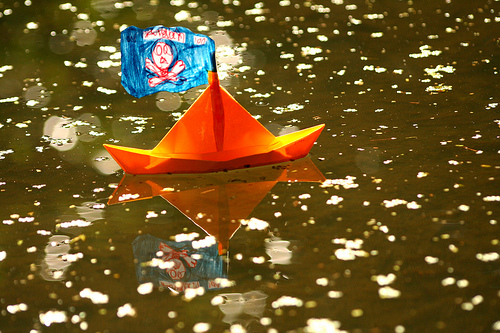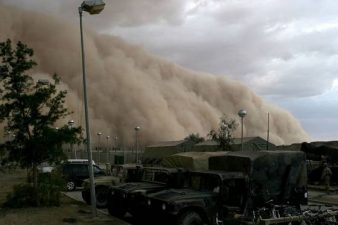 Piracy in the Gulf of Aden continues to thrive despite international efforts at joint maritime patrols along the Somali coastline.
Piracy in the Gulf of Aden continues to thrive despite international efforts at joint maritime patrols along the Somali coastline.
Combating the menace has proven futile, with international laws ill equipped to address what is fast becoming a threat to the lives of crewmen and global trade.
Barring a few incidents, the pirates have, and will continue to indiscriminately attack merchant vessels with the knowledge that their actions are irreprehensible for lack of a recognised mandate which allows the world’s navies to engage and prosecute the 21st Century buccaneers.
As the stakeholders debate over a solution, there has been little to suggest that they are learning from the current crisis; after all, piracy has not been synonymous with Somalia since time immemorial, it has grown out of necessity and dire circumstances, admittedly to represent a thriving business for people in the East African nation.
Yet if one was to study the cause of Somali piracy from its inception, it could be applicable to any corner of the world – one in which people are pushed to the brink of existence and forced to embrace violence and informal work for lack of basic necessities, in this case water.
Assessing Somalia’s water situation one would be hard pressed not to empathise with the people. The country’s geography and climate reads like most Central and East African nations – an arid to semi-arid climate with hot summers and three months of unreliable rainfall. A majority of the population is nomadic, with agriculture the second most common occupation.
One of world’s most undernourished
The country has a large number of Internally Displaced Persons (IDPs) and struggles to provide ‘safe’ drinking water to over 70% of its people, and sanitation to almost half. Somalia has been food insecure for over 20 years and has one of the highest prevalence of under-nourishment in the world – a staggering 70% of the population.
The country oscillates between periods of drought to severe flooding, meaning that it is often ill equipped to meet domestic food demand. The country has two perennial rivers, the Juba and the Shabelle, which are not only shared by Ethiopia and Kenya, but are threatened by rapidly decreasing discharge, resulting in problems downstream. Malaria and tuberculosis are rampant amongst the agricultural community and, the water supply in the capital city Mogadishu is affected by saltwater intrusion from the sea due to extensive groundwater pumping.
The purpose of these statistics is not to compile a fact book, but rather to demonstrate how Somalia’s dependence on water for economic, social and cultural purposes has been exacerbated by the gross mismanagement of the resource in the absence of a formal and stable central government – thus preventing the country from progressing and denying it opportunities.
Liquid assets guarded by warlords
To make matters worse, Somalia is confronted by a chronic lack of rainfall, with the situation in Puntland (the area where pirates operate) so dire, that almost half a million lives are in direct danger from drought. People in the area are forced to walk over 20 kilometres in search of water and often have to contend with warlords guarding the precious commodity.
Furthermore, where water is available, Somalis are unable to afford it, with the best paid labourer estimated to earn about $6 per day as compared with the price of a 200 litre drum which costs $19. Given the situation it is little wonder that people are turning to piracy as a lucrative alternative, where the average turnover through illegal ransoms estimated in the region of $50 million last year – $40 million more than that of the entire Puntland region.
As mentioned earlier, Somalia is primarily an agricultural based economy, with the trickle effect of a lack of water on the land, impacting on livestock and the country’s ability to provide food. The deteriorating situation on the ground has meant that one in six children is acutely malnourished, while one in twenty is severely malnourished and at risk of death.
While the solution to the country’s problems lies in long term scenario planning – collecting rainwater, utilising modern techniques, improving sanitation and irrigation and, rooting out corruption – this can only be achieved through the establishment of a stable government; something which has eluded Somalia since the government of Mohammed Siyad Berry collapsed in 1991.
Water and piracy, the interconnection
There is no doubt that piracy is the scourge of the seven seas, with more than 25 ships hijacked up until April this year – a 300% increase since 2008. However, it is imperative to understand that piracy is a symptom of the real crisis, which is the systematic disintegration of the country owing to mismanagement and lack of resources.
Somalia’s downward spiral has been borne out of a water crisis, which has led to a food crisis, which has turned into a crisis of piracy. The question is; are we willing to learn from the Somali plight to ensure that our water resources are safeguarded and properly managed for the future?
This article was written by Rohit Honawar, currently a research analyst at Strategic Foresight Group, a political think tank based in Mumbai – India. [image via aidenmorgan




One thought on “How Lack of Water Drives Piracy Into the Gulf of Aden”
Comments are closed.